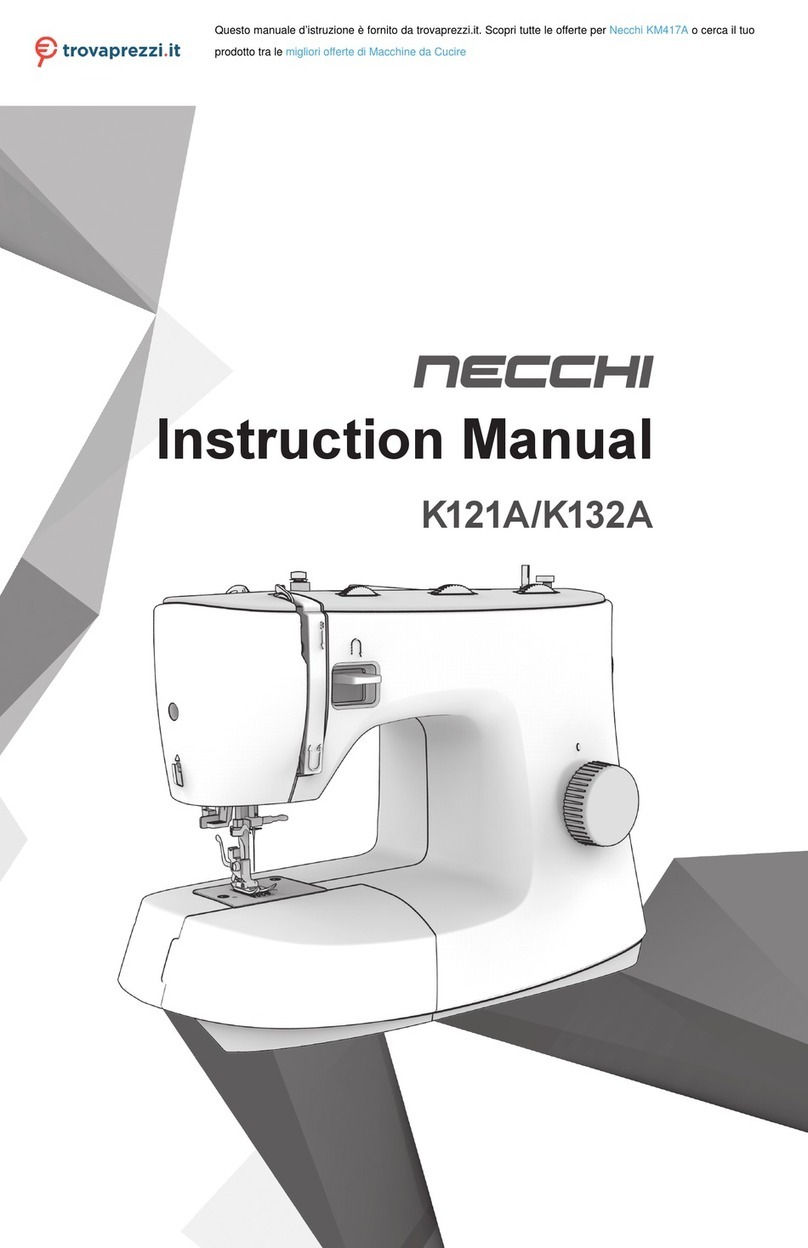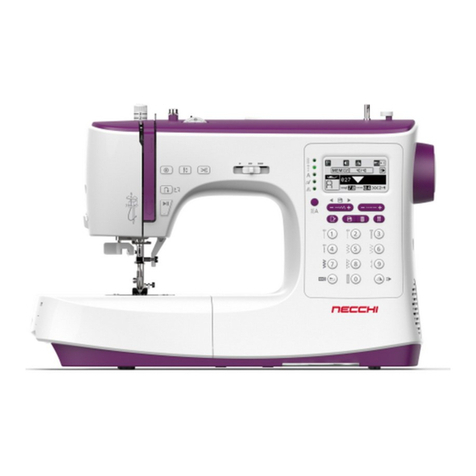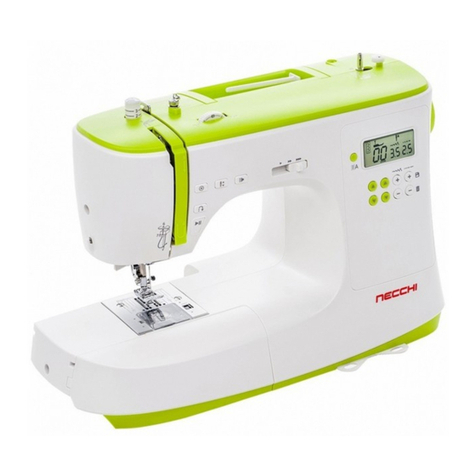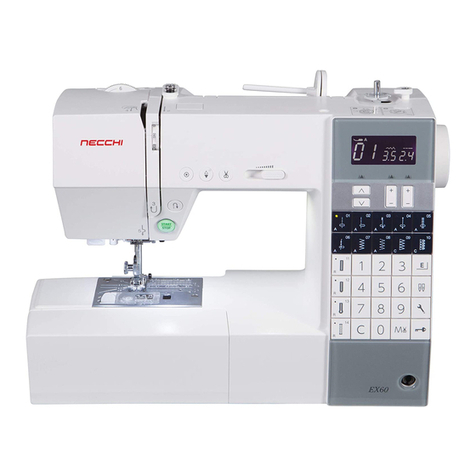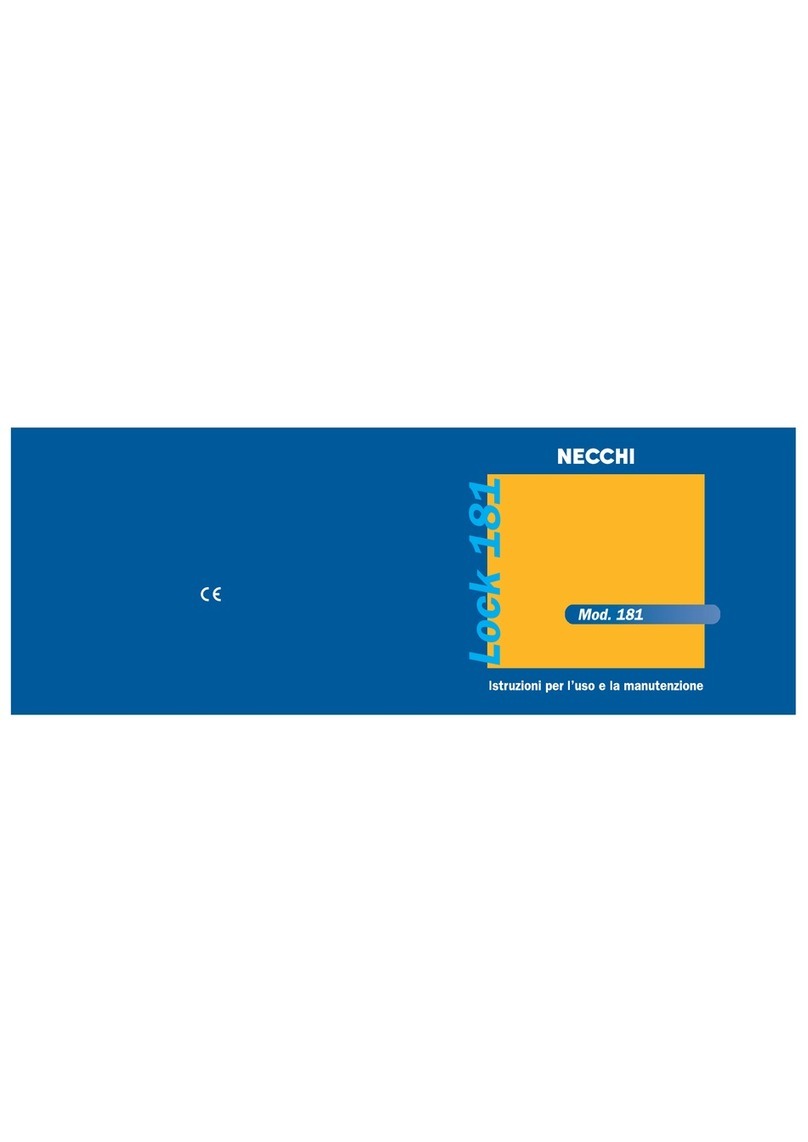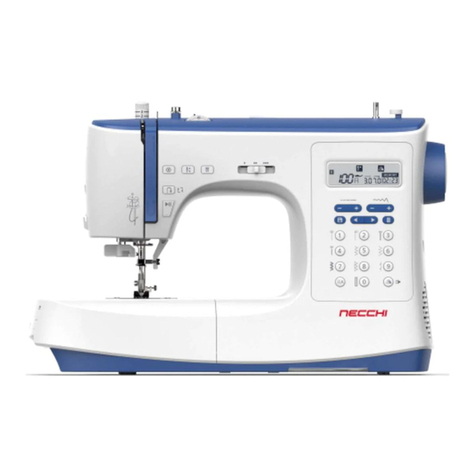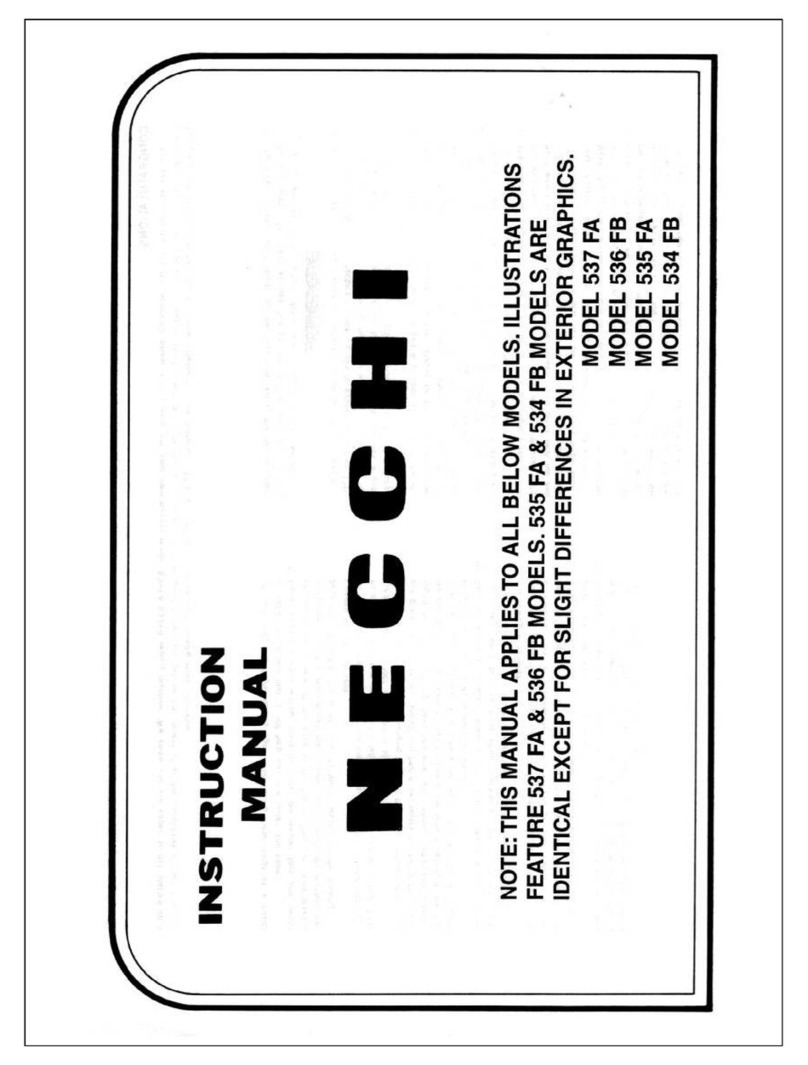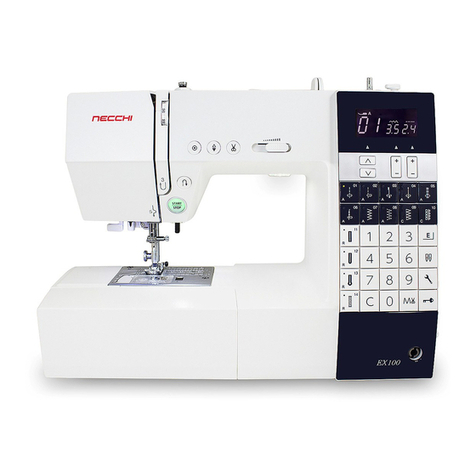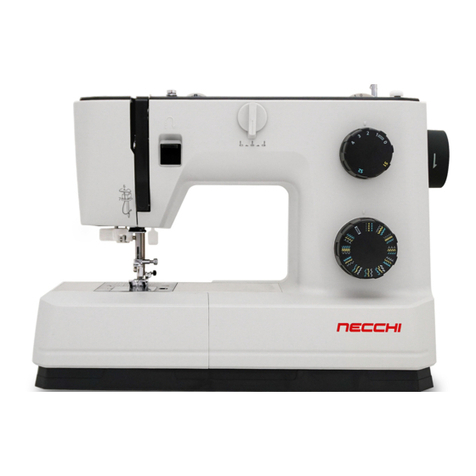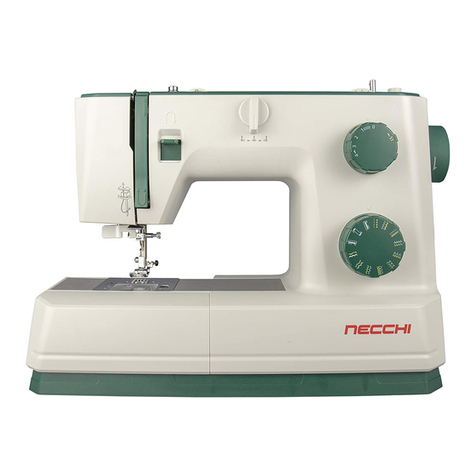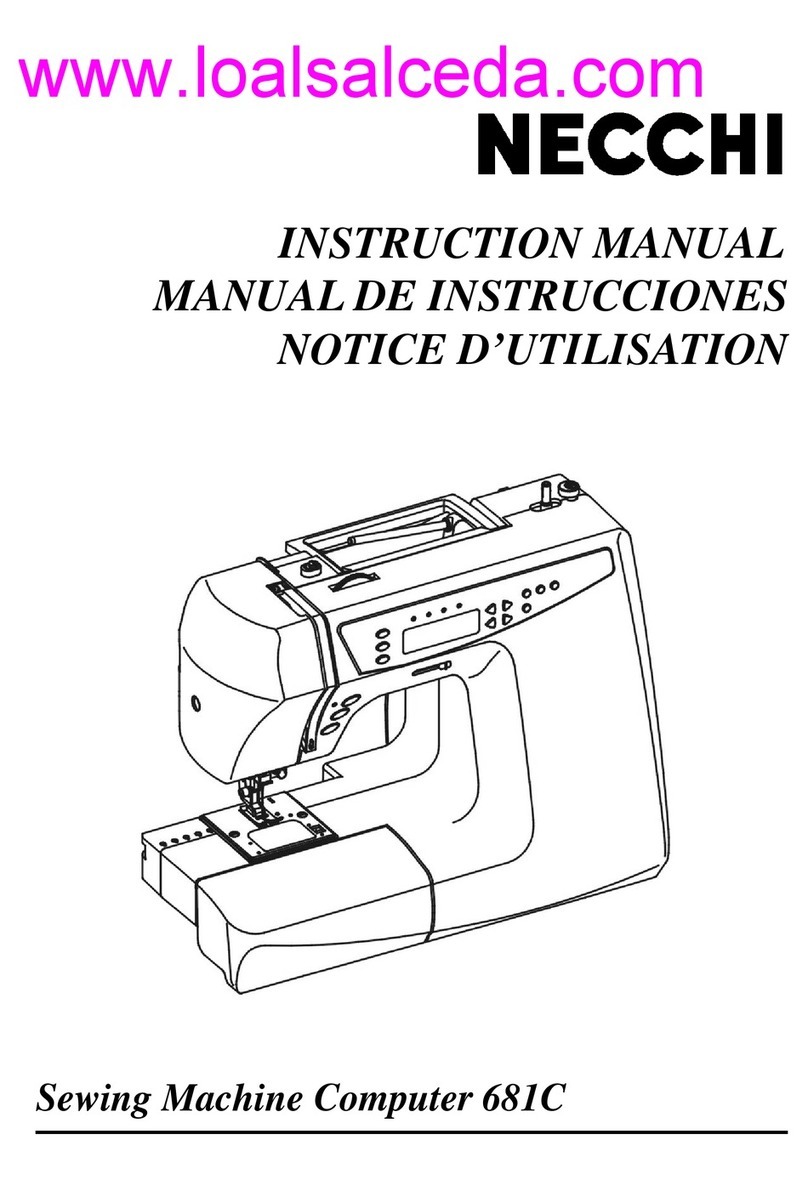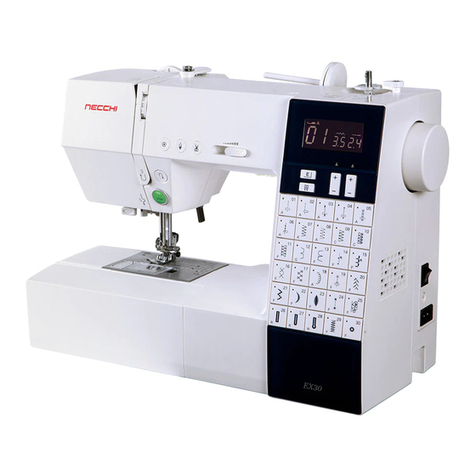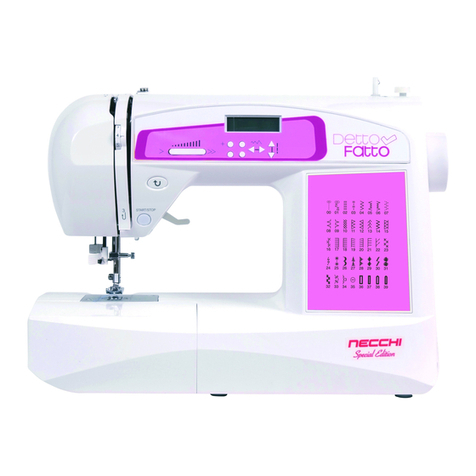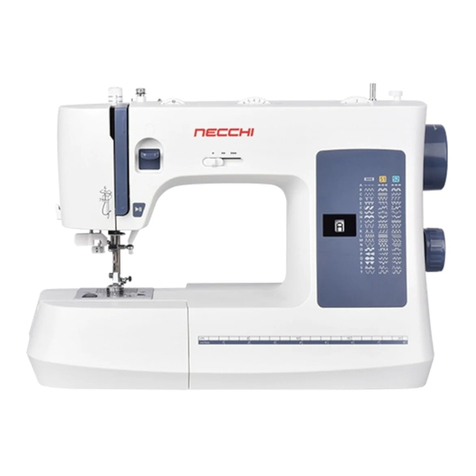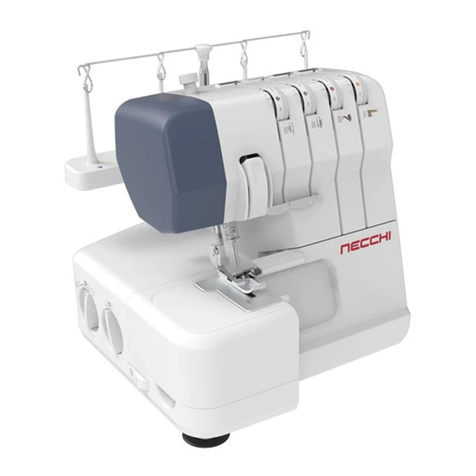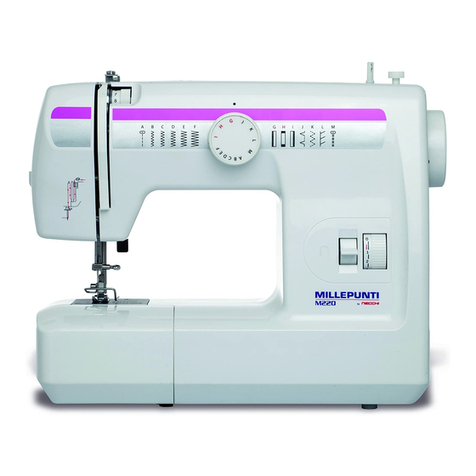SECTION 1. KNOW YOUR MACIHNE
Names of Parts...............................................................2
Setting the Spool Pin......................................................2
Standard Accessories.....................................................3
Extension Table ..............................................................3
SECTION 2. GETTING READY TO SEW
Connecting the Power Supply ........................................4
Controlling the Sewing Speed ........................................5
Reverse Stitch Lever.......................................................5
Dropping the Feed Dog ..................................................5
Raising and Lowering the Presser Foot..........................6
Changing the Presser Foot.............................................6
Removing and Attaching the Foot Holder ......................6
Changing Needles..........................................................7
Fabric and Needle Chart ................................................7
Winding the Bobbin ........................................................8
Removing the Bobbin .....................................................8
Winding the Bobbin ........................................................9
Inserting the Bobbin .....................................................10
Threading the Machine.................................................11
Needle Threader ..........................................................12
Drawing up the Bobbin Thread .....................................12
Selecting the Stitch Pattern ..........................................13
Stitch Length Dial .........................................................13
Stitch Width Dial ...........................................................13
Balancing Needle Thread Tension ................................14
SECTION 3. BASIC SEWING
Straight Stitch Sewing ..................................................15
Changing the Sewing Direction ....................................15
Use the Seam Guide ....................................................16
Turning a Square Corner ..............................................16
Variable Needle Position...............................................16
SECTION 4. UTILITY STITCHES
Basic Zigzag.................................................................17
Overcasting ..................................................................17
Tricot Stitch (Multiple Zigzag Stitch) .............................18
Knit Stitch .....................................................................18
Straight Stretch Stitch...................................................19
Zigzag Stretch Stitch ....................................................19
Button Sewing ..............................................................20
4-Step Buttonhole.........................................................21
Corded Buttonhole........................................................22
Zipper Application....................................................23-25
Blind Hemming ............................................................26
SECTION 5. DECORATIVE STITCHES
Shell Tuck .....................................................................27
Smocking......................................................................27
Applique........................................................................28
Pin Tucking ...................................................................28
Satin Stitches................................................................29
Decorative Stretch Stitches ..........................................29
SECTION 6. CARE AND MAINTENANCE
Cleaning the Hook Race and Feed Dog.......................30
Replacing the Bobbin Holder........................................31
Troubleshooting ............................................................32
TABLE OF COTENTS

